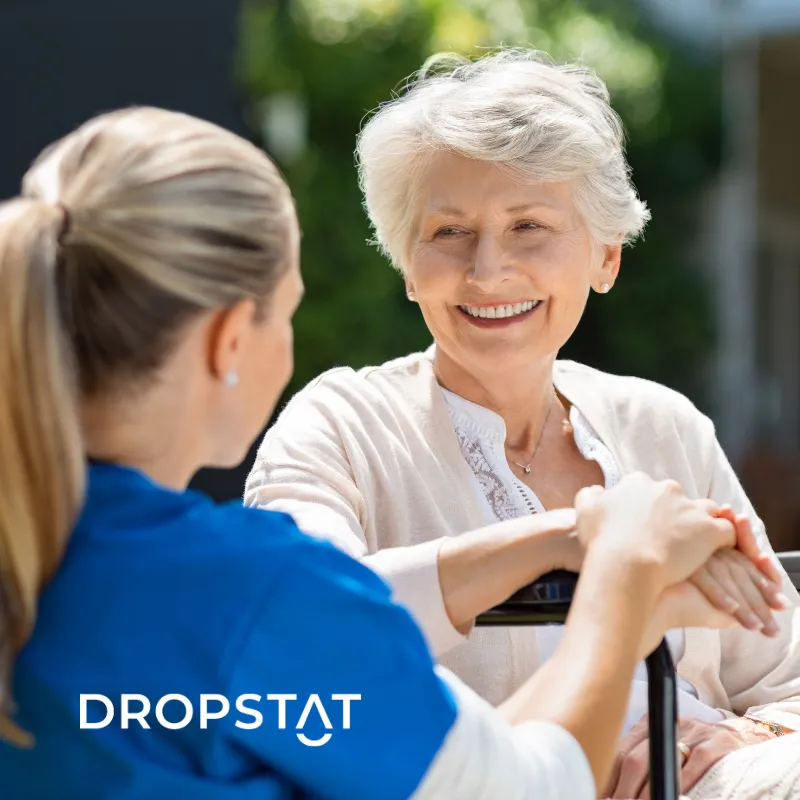What is patient centered care?
Patient-centered care (PCC) is a model of healthcare that emphasizes the importance of the patient as an individual. Healthcare providers do this by considering patients’ values, preferences, and needs as integral components of their care. The definition of patient-centered care is providing care that is respectful and compassionate, and sensitively responsive to the patient’s needs. The Institute of Medicine suggests that the values of a patient should guide all clinical decisions related to their care.
Patient-centered care is a departure from traditional healthcare models that focus on healthcare professionals making a diagnosis and then treating a disease. Instead, the needs of individual patients are pushed to the front of the discussion. This is done through caregivers recognizing that each patient is unique and that their care should be tailored to their individual needs.
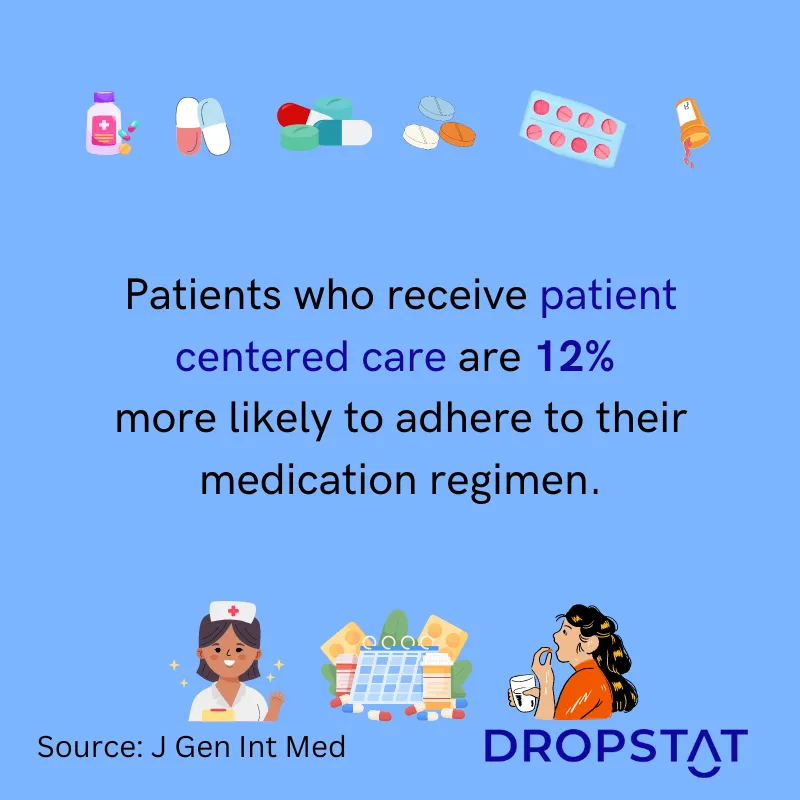
Why is patient centered care important?
Patient-centered care is important because it can influence healthcare on many levels. The quality of healthcare delivery, the impact it has on the healthcare facility team, and the effect it has on healthcare consumers.
The benefits of patient-centered care include:
Improved health outcomes
Patients in healthcare facilities that practice patient centered care are actively involved in their own healthcare. They have the information they need to make informed decisions about their care. They are more likely to adhere to their treatment plan, leading to better health outcomes.
Reduced healthcare costs
When patients have care that is tailored to their individual needs, they are less likely to undergo unnecessary tests, procedures, or hospitalizations. This can result in cost savings for the patient and healthcare provider. This supports value-based care since the available resources are used in a sustainable way – the healthcare system can use those saved resources for others who really need them. Value-based care is a patient-centric healthcare model that supports money-saving strategies and improves outcomes.
Improved patient safety
Patient centered care supports people in developing the knowledge, skills, and confidence they need to more effectively manage and make informed decisions about their own health care. Instead of the patient taking orders from the doctor, informed patients actively participate in directing their own care. This can prevent potential safety issues such as medication errors due to a lack of knowledge and communication.
Moral correctness
Many people believe that patient centered care is a morally correct approach to nursing and healthcare. Patients deserve to be treated with respect, compassion, and dignity as part of providing care.
Improved facility reputation
When healthcare facilities prioritize patient centered care, they are seen as more patient-friendly and compassionate, which can enhance their reputation and improve their public image. When the public sees that a healthcare facility values the quality of healthcare delivery, patients will want to receive care in that facility.
Enhanced provider satisfaction
Providers who practice patient-centered care often report better job satisfaction and a true sense of fulfillment in their work. Studies show that there is a positive association between patient centered care and healthcare provider wellbeing. Healthcare providers are more person-centered, managers listen to their staff better and work together to formulate plans, and workers feel pride in their jobs.
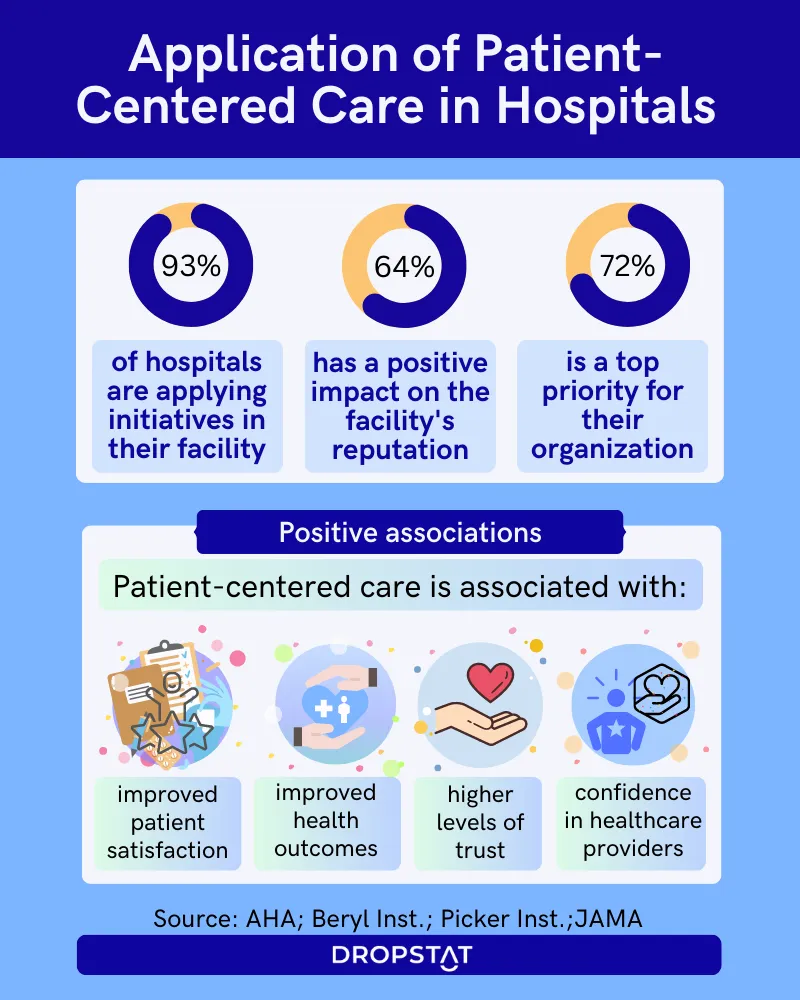
Patient-centered care examples
Patient-centered care is a new health system that reflects a philosophy that respects the individual’s specific health needs to empower patients in their health care. Through exposure to examples of patient-centered care, healthcare workers can become more focused on respecting patient values.
1. The patient with limited funds
Patient-centered care uses a holistic approach. By definition, healthcare professionals consider the whole patient, their needs, and abilities. Therefore, if a patient needs 25 sessions of physical therapy, but they can only afford 4 sessions, the health care providers need to formulate a solution that will still allow the patient to achieve their desired health outcomes.
2. Surgery with a 50% chance of success
An example of patient-centered care is practicing shared decision-making. It involves discussing the risks and benefits of different treatment options with the patient and allowing the patient to make an informed decision based on their values and preferences. A doctor might feel it is worthwhile to go ahead with surgery, although there is only a 50% chance of success. The patient might feel that the financial burden of such an expensive surgery is not worth it if it is less likely that they would survive. The team would either have to find a better solution or respect the patient’s choice.
3. Patient satisfaction with pain relief
Another example of the effect of patient-centered care is how patients experience different degrees of comfort when they rate their satisfaction levels with pain relief. The aspects that affected patients’ satisfaction with their treatment in a study were
- How they viewed the care provider,
- The pain management experience
- The outcome, patients were either very satisfied (20%) or satisfied (51%) with the relief provided,
even though all patients experienced high severity of pain.
4. Encouraging a patient to do what works best for them
Patient-centered care involves providing care that is culturally sensitive and inclusive. This means taking into consideration the patient’s cultural background and beliefs. One patient may want quiet music playing to relax them, another patient might want quiet. Food and diet are also areas where many patients have beliefs and practices.
5. A helpful questionnaire
Caregivers can be active patient-centered caregivers by helping the patient to fill out a patient-centered care plan questionnaire created by the AAFP. A care plan helps the healthcare team respect the patient’s needs and wants and promotes continuity of care. Taking individual medical needs as well as the patient’s choices and values into account allows patients to recover with respect and dignity.
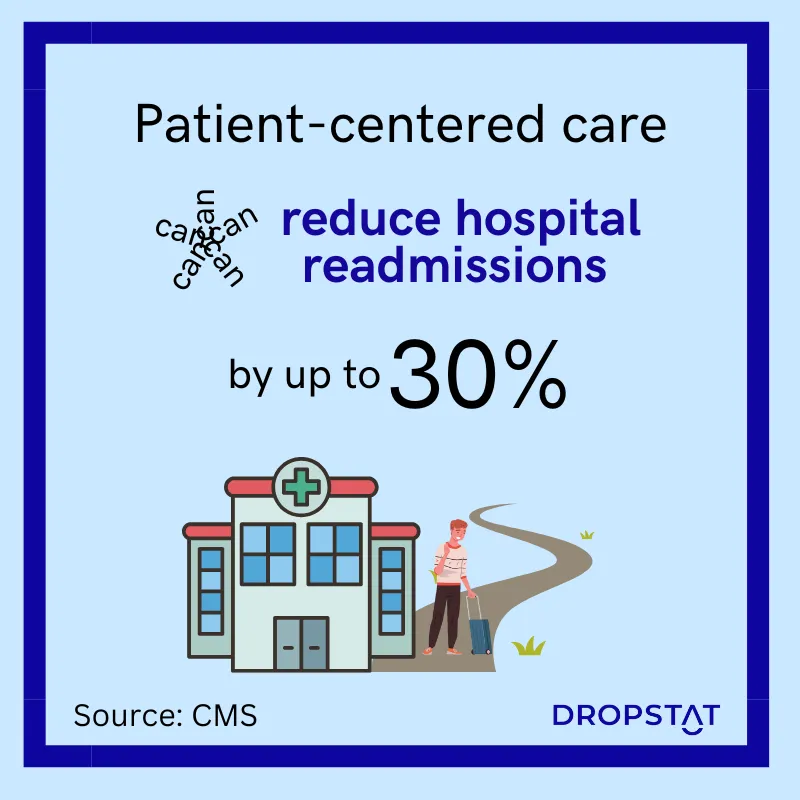
8 Components of patient-centered care strategies
Healthcare facilities can use strategies that improve patient-centered care whilst taking on board individual patient preferences:
- Empower patients to participate in their care: Healthcare facilities can encourage patient participation by providing them with access to their medical records, educating them about their condition and treatment options, and involving them in the decision-making process that is related to achieving their healthcare goals. A patient may not fully understand their medical condition. Once they have learned about it, they will apply their values to the medical situation.
- Establish effective communication channels: Healthcare facilities can ensure that patients can easily communicate with their healthcare providers by offering a range of communication channels such as in-person consultations, phone, email, or telemedicine. Healthcare providers should emphasize that the patient is more than welcome to reach out to them.
- Promote cultural competency: Healthcare facilities can promote cultural competency by providing staff with training on cultural diversity and encouraging staff to develop relationships with patients that are based on mutual respect and understanding. An example would be, making health information available to patients via whichever media or in a format the patient can most easily learn from.
- Develop patient-centered policies and procedures: Healthcare facilities can develop policies and procedures that prioritize patient-centered care, such as allowing patients to have a say in their care plan and addressing patients’ concerns in a timely manner. Giving patients emotional support and facilitating physical comfort where possible is a priority when practicing patient-centeredness.
- Involve family members and caregivers: Healthcare facilities can respect and involve family members and caregivers in the care planning process, especially when patients cannot participate due to their health condition.
- Foster a patient-centered culture: Healthcare facilities can promote a patient-centered culture by recognizing and rewarding staff members who prioritize patient-centered care, and by involving patients in quality improvement initiatives.
- Implement technology that supports patient-centered care: Healthcare facilities can implement technology that supports patient-centered care, such as patient portal software, that allows patients to access their medical records and communicate with their healthcare providers.
- Regularly solicit and act on patient feedback: Healthcare facilities can regularly solicit patient feedback and take action to address patient concerns and suggestions for improvement. This can help to build trust and confidence in the healthcare facility and its staff. Many healthcare systems do this by emailing surveys after appointments, handing out questionnaires, and putting feedback forms on their websites.
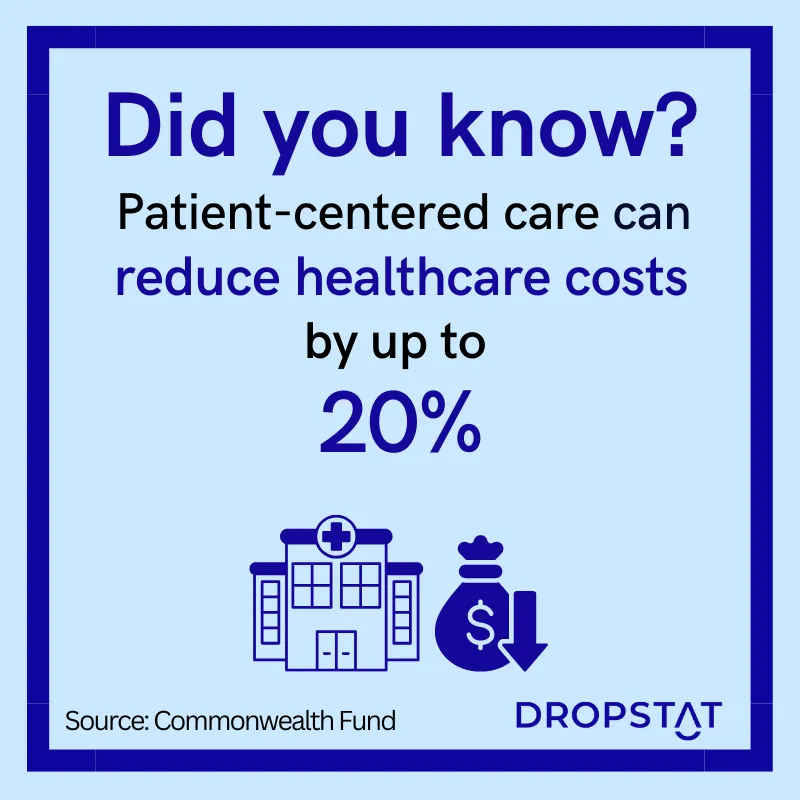
Patient-centered care in nursing
Patient-centered care is an important concept in nursing. Nurses are usually the healthcare professionals who spend the most time with patients. Caring in nursing is intrinsic to the patient’s holistic care experience, and patient-centered care is where nurses deliver quality and compassionate healthcare.
Here are some ways nurses can promote patient-centered care:
- Nurses can actively listen to patients and discover their unique healthcare-related needs, concerns, and values.
- Nurses, together with the patient, can create care plans tailored to the patient’s unique needs.
- Nurses can engage patients in shared decision-making regarding their care. Nurses can promote effective communication and provide clear explanations of procedures and treatments.
- Nurses can be a pillar of support to patients, by respecting patients’ privacy, autonomy, and dignity throughout their healthcare journey.
- Nurses can advocate for the patient’s rights as they collaborate with interdisciplinary teams to ensure holistic care.
How can managers measure the success of patient-centered care strategies?
Measuring patient-centered care in healthcare facilities is important to ensure that the strategies and initiatives put in place are effective in meeting the needs and expectations of patients. Here are some ways to measure patient-centered care:
Patient satisfaction surveys: One of the most common ways to measure patient-centered care is to conduct patient satisfaction surveys. These surveys can be conducted through various methods, including paper surveys, phone surveys, or online surveys. The survey questions can assess patient perceptions of their care experience, including communication with healthcare providers, involvement in decision-making, and overall satisfaction with the care they received.
Patient-reported outcomes (PROs): PROs are assessments of a patient’s health status and quality of life, as reported by the patient. They can reveal whether the care received was effective in improving the patient’s health and well-being. PROs can be measured through questionnaires that ask patients about their symptoms, functional status, and quality of life.
Health outcomes: Health outcomes, such as hospital readmission rates, mortality rates, and complication rates, can provide an objective measure of the quality of care provided by a healthcare facility. By comparing these outcomes to national benchmarks, healthcare facilities can assess their performance and identify areas for improvement. Improving patient outcomes is a common healthcare management goal.
Patient engagement metrics: Patient engagement metrics can measure how far patients are involved in their care. Being connected to trends in technology in healthcare helps with collecting these metrics, such as knowing the number of patients who access their electronic health records, the number of patients who participate in shared decision-making in person or by using a device, and the number of patients who take educational classes related to healthcare, through the patient portal.
Staff surveys: Staff surveys can provide insight into the extent to which patient-centered care is a priority in the healthcare facility. The survey questions assess staff perceptions of the facility’s culture, communication with patients, and staff training opportunities.
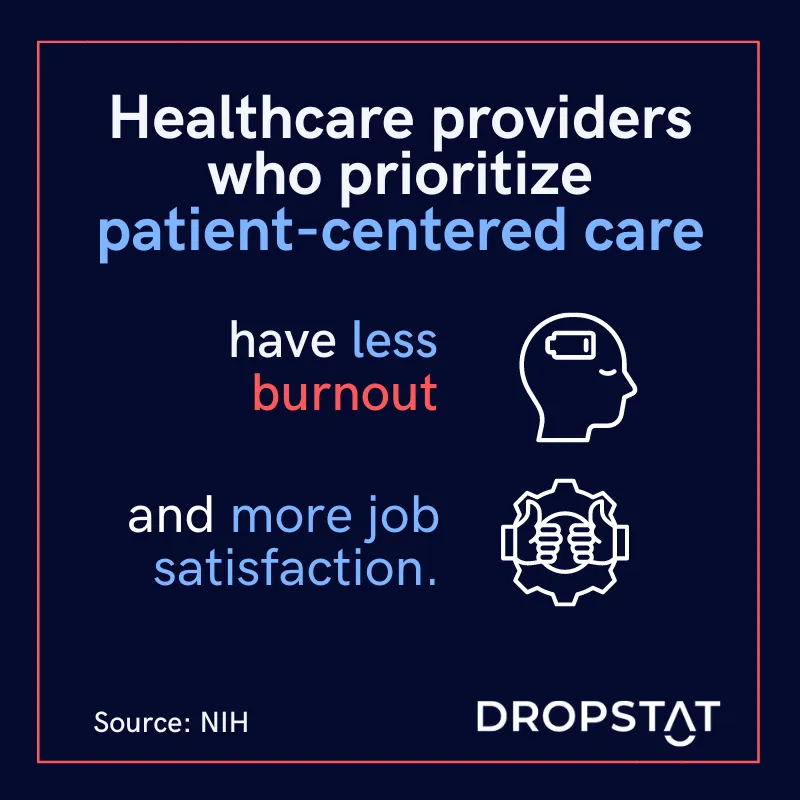
How Dropstat can improve patient-centered care in your healthcare facility
Dropstat, an AI staff scheduling app, can help healthcare facilities promote patient-centered care by ensuring that every shift is fully staffed with sufficient nurses with the required knowledge and education. With enough nurses on board, nurses will have the time to effectively care for their patients, educate them and include them in their care plans. With this capacity, healthcare facilities can be better equipped to provide all the aspects of patient-centered care and uphold a philosophy of healthcare that recognizes the value of each individual patient.
Schedule a demo and reveal how Dropstat could help improve patient-centered care for your healthcare facility.
Patient-centered care FAQs
What is patient and family-centered care?
Patient and family-centered care is a subset of patient-centered care that focuses on the involvement of the patient’s family and loved ones in their care. It recognizes that the patient’s family and loved ones can provide valuable support and input into their care.
This includes encouraging their participation in discussions about the patient’s care and providing them with the information they need to be effective partners in the patient’s care.
How is the four Cs model related to patient-centered care?
Care teams practice the four primary care core functions, the 4Cs model of care for patient-centered care, with Connection, Communication, Coordination, and Continuity.
The healthcare provider establishes a strong connection with the patient through active listening, upholding patient values, and building trust. Clear and effective communication plays a vital role in the patient-provider relationship by the care team sharing information about the patient’s care in an easily understandable manner.
The patient’s care is comprehensive, as there is coordination involving all members of the patient’s care team, ensuring that all the patient’s needs are addressed. Providers give care that is consistent, with continuity across all healthcare settings which means the whole care team is aware of any changes in the patient’s condition. The Four Cs model of care can lead to improved patient satisfaction, better health outcomes, and reduced healthcare costs.


